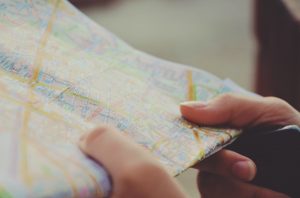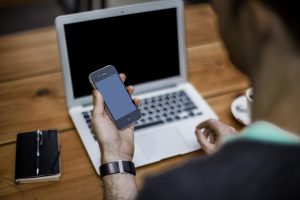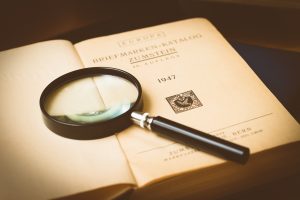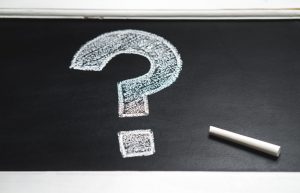Digital Literacy Skills: Finding Information
The internet has provided us with a wealth of information at our fingertips. The problem with this is, we almost have too much information to choose from. It is sometimes difficult to sort between real information, misinformation, opinions, and bias. Most of us rely on search engines to do the sorting for us but this also isn’t enough. Students need to know how to search accurately and then to evaluate the information they find, our critical thinking guide will help you develop these skills.
When researching online independently students may rely on a quick Google or Wikipedia search, followed by copy and paste! There are issues here with plagiarism but mainly, there is a lack of knowledge on how to conduct proper research online. It is important for students to learn how to search for accurate and reliable information as this will become a valuable tool for them should they go on to further education or indeed for their future jobs. Developing this area of digital literacy means showing students the tools they can use to help them research better. These skills will also improve overall study skills.
From starting your search to verifying the information you find, here are 15 tips for better online research.
Starting your search
1. Think before you begin.

Rewrite every assignment in your own words before you begin your research. This will force you to understand it, and make it much more likely that you’ll be able to identify what is helpful when you see it. If you need help, ask your teacher, librarian, parent or classmate for help.
Then, brainstorm and make a list of key search terms, using mostly nouns, rather than verbs. Create a series of terms that you can search in combinations of two, three or more. When you find a good search result, look at the most important words in it, and add them to your keyword list. Try a series of keyword combinations.
Also, keep track of the sources you review.
2. Where to start your search?

Don’t rely on search engines such as Google, Bing, Yahoo, etc. to do all the research for you.
The internet is not always the best place to start; databases may help you find credible information you need more quickly than any search engine will.
You must select and always be able to defend the sources you use before you start writing. You could also try several search engines to research information. There is more than one, we promise. If you want to stay with Google, you could try using Google Scholar to find academic resources.
3. When looking at search results, dig deep – don’t stop at the first page!
Many websites rank high in search engines for reasons that have nothing to do with the quality of their content.
Professionals and academics don’t optimise their content for search engines, so it usually does not appear at the top.
4. Use special search functions to make the search engines work for you
Useful search functions can help to empower students to search more effectively for information related to their topic.
-
- Search using combinations of several keywords.
- The use of quotation marks around the search keywords will ensure that search results for these terms are returned in the order they were entered. For example, using quotation marks to search for “online safety” will return results for that exact term, otherwise the search results will include all references to both words.
- Learn the AROUND function.
- Search “Kennedy” AROUND(10) “moon” and the top results will be ones in which Kennedy appears within ten words of moon.
- NOTE: both search terms must be in quotes, AROUND must be capitalised, and the number must be in parenthesis.
- You can find a particular type of file by adding in the file type into the search engine, for example, if you want to find a PowerPoint presentation you can add ‘PPT’ to the search engine, or if you would like to find worksheets/essays/articles add in ‘PDF’ after the search word in your search engine.
5. Find Primary Sources
Think of primary sources such as newspaper and magazine accounts, letters, diaries, films, photographs and other documents written or recorded at the time of the event as “eye-witness accounts” which are generally more reliable than second-hand information.
Evaluating the content you find.
With so much content available it is important to be able to judge what information is accurate and reliable, and what is not. Here are useful tips to evaluate content.
6. Check the URL/website address.
Does the website have a strange website address or url?
False information articles may use domain names that look like a trusted news or media site, but with minor spelling changes.
7. Take a closer look.
Check the source of the information – is it a credible/reliable source?
If you are unfamiliar with the site, look in the about section or find out more information about the author. If the site doesn’t list this information, then leave and visit another site. Also, look for information about the publisher or author by searching their names in a search engine. Any credible publisher or author should be mentioned on other reputable websites. When you find content on Wikipedia, do you know who wrote it? No, you don’t. Wikipedia contributors are anonymous; you do not know anything about them or their credentials. It may be a place to do your “pre-research” to find keywords to search on.
8. Look beyond the headline

Check the entire article. False and unreliable information can often use sensationalist or shocking headlines to grab attention, but a headline or social media post does not give the full story.
Often the headlines used for false information are in all caps and use exclamation points.
9. Remember, the camera can lie.
Don’t assume that a picture is reliable. Images that have been altered, or even used out of context, can make it easy to draw the wrong conclusions.
10. Just because information goes viral does not mean that it is accurate.
False or misleading information can be designed to provoke a strong reaction and therefore increase the likelihood that people will be prompted to ‘share’ it. Social media and messaging platforms make it extremely easy for information to be shared quickly to many people.
11. Check other sources
Can you find the same information on other reputable website? Are there any sources in the information?
If so, check they are reliable or if they even exist. If you find a few unrelated, credible websites in agreement on an issue, your research may be done. This is not the case if you read something just once. Watch the following video:
This video was an Aprils Fools joke by the BBC. As it is a website that we usually associate with accurate information, it can take a few moments to realise it is false information. It is important that information is verified by a number of sources before it is believed. Read more about False Information.
12. Check the facts
False information often contains incorrect dates or altered timelines. It is also a good idea to check when the article was published, is it current or old? Check when an article was written or last updated. If you can’t tell when a source was written, then keep looking until you find a good source about the topic that does have a recent date, so you can see if anything has changed.
13. Check your biases.
Are your own views or beliefs affecting your judgement of how accurate or reliable a piece of information is? In general, we are all drawn to information that confirms our own beliefs or biases. Online algorithms that are designed to give us news and information based on our personalised searches and interests make it harder to see beyond our own world view.
14. Is it a joke?
Satirical sites are popular online and sometimes it is not always clear whether a story is just a joke or parody. Check the website – is it known for satire or creating funny stories?
15. Ask the experts.
There are many organisations offering guidance and resources to help recognise false information, to empower people to make informed choices.
Be Media Smart – www.bemediasmart.ie #StopThinkCheck
Developed by Media Literacy Ireland, Be Media Smart offers useful tips and guidance on how to tell the difference between reliable and accurate information and or deliberately false or misleading information.
Media Literacy Ireland – www.medialiteracyireland.ie
Facilitated by the Broadcasting Authority of Ireland, MLI is a network of volunteer members coming from a large number of sectors, organisations and interests, working together to empower people to make informed media choices about the media content and services that they consume, create, and disseminate across all platforms. The MLI offers useful media literacy resources, research, and news.
Explained: What is False Information?
For more on what false information is, who creates it and why, and how to spot it watch our Explainer Video.
This animation video supports the Junior Cycle Digital Media Literacy resource Connected.
Fact-checking sources include:
- Snopes: www.snopes.com
- Politifact: www.politifact.com
- Fact Check: www.factcheck.org
- Google Reverse Image Search: https://images.google.com/
- Download False Information/Fake News Checklist






